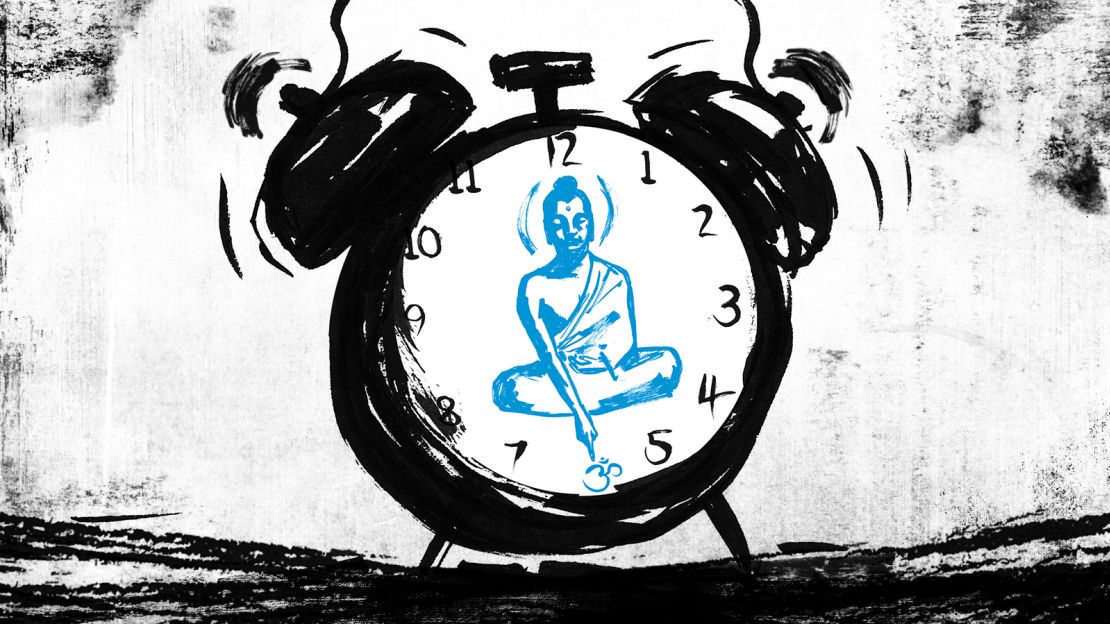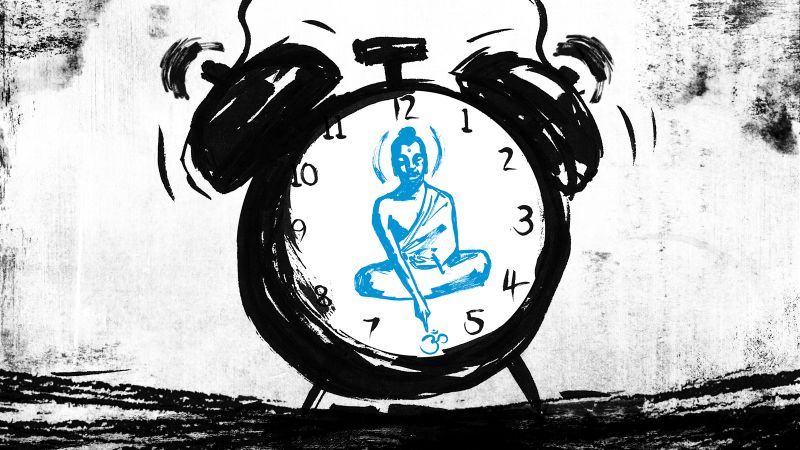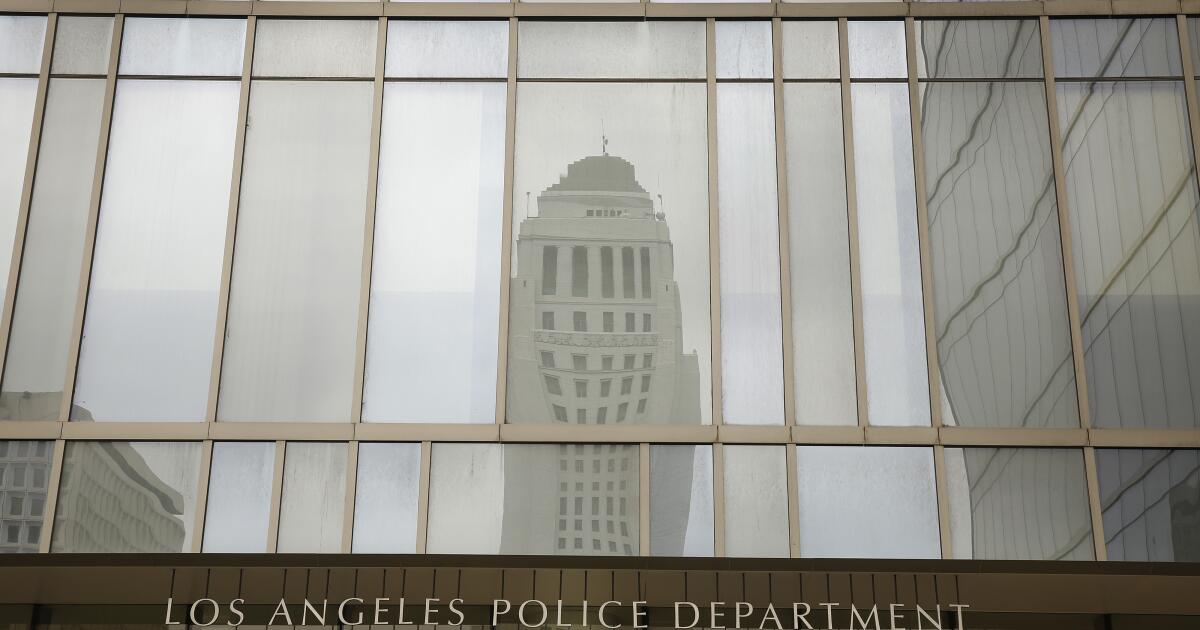cnn
—
“It's not true that life is one damn thing after another; it's one damn thing over and over again.” —Edna San Vicente Millay
I've seen the 1993 movie “Groundhog Day” over and over again, but only once on the big screen, a few years after it was in theaters. It was screened in a packed conference room inside Baltimore's Walters Museum of Art, followed by a lecture by a comparative religion scholar who took us through the spiritual meaning and symbolism cleverly presented in what is, on the surface, a comedy. romantic with a “Twilight”. Zone Premise”.
Even if you haven't seen the movie, you still know the basic plot because the term “Groundhog Day” has entered the common vernacular (which alone speaks to its resonance beyond the movie itself) as a short for repeating the same experience over and over again.
But it's worth watching, for the first time or tenth, to witness egocentric weatherman Phil Connors (a role only Bill Murray could master) breaking that cycle through personal redemption. It is a great metaphor that some scholars consider Buddhist, Christian or secular philosophical. It is also directly and practically applicable to how you spend your day today and every day.
I think the best way to describe the film is as “Buddhist,” an adjective coined by the film's director, Harold Ramis, to summarize his own belief system. His mother-in-law and one of his best friends were devout Zen Buddhists who hooked him on his precepts. “Memorable, simple, did not require articles of faith, but completely humanistic in all the ways that I valued,” he said in an interview with Chicago magazine in 2008. “So I proselytize without practicing it.”
And what entertaining Buddhist proselytizing “Groundhog Day” is. Like sushi or Jamba Juice, it's so delicious you barely realize you're eating raw fish and fruit. That's the reason for this metaphysical film's enduring cult status: a genuinely hilarious film that glimpses the meaning of life.
There are many theories about Phil's time loop (which by one estimate lasted almost 34 years) and his eventual escape. One sees it as a metaphor for psychotherapy: repeating stories from the past until you achieve a breakthrough that allows you to dismantle old patterns. Another claims that he illustrates a classic economic paradigm.
But the evidence that most invokes wisdom concerns religious insight and how to spend our precious hours more fruitfully.
One of the central tenets of Buddhism is that we must continue reincarnating until we find enlightenment. The concept, called samsara, keeps us living many lives through “various modes of existence” (called gati), some humble animal and some divine, as determined by our actions (karma). Once your actions and consciousness destroy ignorance and ego, you awaken to true, interconnected reality, which frees you from the cycle and takes you to heavenly nirvana.

In the film, written by Danny Rubin, a Zen Buddhist, according to Ramis' DVD film commentary, Phil is reincarnated every day, but also transforms his behavior over “time.” He self-centeredly takes advantage of his unique situation (steals bank trucks, stuffs his face with angel food cake, tricks a woman into bed), but ultimately perfects the day with creative tasks of self-improvement and compassionate help. to others. Once he becomes the best possible version of Phil Connors, he is freed from his temporary prison and, at the same time, wins the love of his virtuous producer, Rita.
Phil's plight is no different than that of a character in Greek mythology who was doomed to eternally and perpetually push a rock up a mountain. In his essay “The Myth of Sisyphus,” Albert Camus uses history to illustrate the absurdity of lives that toil in meaningless work. But Camus says that we must find hope and therefore meaning in such a situation, and he imagines Sisyphus understanding and accepting it.
There is a similar Buddhist story about an enlightened monk who climbs a mountain to get a scoop of snow to fill a well at the base of the mountain, over and over again. Some lessons are time-consuming and seemingly useless to learn. Buddhist monasticism is itself a kind of “groundhog,” with the same daily routine, clothing, and rituals, over decades of practice.
However, each moment remains different. Remember what the ancient Greek philosopher Heraclitus said: “No one bathes in the same river twice, because it is not the same river and he is not the same man.” In that sense, Phil doesn't repeat the same day over and over again because one important thing is different every Groundhog Day: him. He is the only thing that is changing.
What is time anyway? Illusory, says Buddhist dogma, is a notion contained in the Zen koan. Phil wonders when he begins to understand that his own time is not moving forward: “What if there was no tomorrow? Today there were none.”
That's right, groundhogs, there is no past or future. There is only now.
The Catholic concept of purgatory, a spiritual realm where souls must remain until they atone for remaining sins and earn their way to heaven, fits the film as much as the Buddhist concept of samsara. And many references and motifs that recur in the film support the notion that “Groundhog Day” is Christian rather than Buddhist. “These sticky buns are heaven.” “When you're in the snow you look like an angel.” The groundhog's hibernation (being reborn after a kind of death and emerging from the sleepy grave) is reminiscent of Jesus.
There's even a delightfully blasphemous scene in which Phil declares that he is to God. “I am not he God… I don't believe it,” he wonders aloud as he contemplates how close he is to the Catholic conception of monotheism. “Maybe I'm not omnipotent. He has been here so long that he knows everything.” This after having shouted, like an angry deity: “I make the weather!”
Then there's the movie montage with a homeless man whom Phil ignores from the beginning, patting his pants pockets like he's out of cash. Later, Phil repeatedly tries to help, only to find that the man dies each time. It is the lesson of the Serenity Prayer, written by theologian Reinhold Niebuhr and later adopted by Alcoholics Anonymous:
God, grant me the serenity to accept the things I cannot change,
The courage to change the things I can,
And the wisdom to know the difference.
After accepting that he cannot save the old man, Phil takes an optimistic and significant plot turn and begins to live in service to others (catching a child who falls from a tree, saving the mayor from suffocation, etc.). It is this change of direction that allows him to escape purgatory.
Whatever spiritual message the film has in store for you, it is an undeniable call to hope. Phil survives his numerous suicide attempts (jumping off a church, dropping a toaster in the bathtub, jumping off a cliff) and is reborn as a hopeful and charitable man. Baptized by death and made stronger by it on the other side, he tells his television audience: “When Chekhov saw the long winter, he saw a winter bleak, dark and devoid of hope. However, we know that winter is just another step in the cycle of life.”
Winter is a great metaphor for the desolation that precedes rebirth. “I'll give you a winter prediction,” the meteorologist reports in the film's “desperate” second act. “It will be cold, it will be gray and it will last the rest of your life.”
But in a more optimistic stage he wakes up one happy morning and surprises a stranger with a hug and a quote from Samuel Coleridge: “Winter, sleeping in the open air, carries on his smiling face a dream… of spring.” It's from the sonnet “Work Without Hope,” which contains the famous line “bloom for whom you can,” which Phil makes.
This is the classic hero's journey. Phil is exiled to an unexpected adventure, becomes desperate, suffers loss, but eventually learns to overcome his obstacles and his hopelessness. At the end of the movie, he managed to become the city's hero for all the mitzvahs he performs in a single day.
You don't have to subscribe to Buddhism or Christianity or believe in reincarnation or heaven for this story to be directly applicable to your daily life.
“What would you do if you were stuck in one place and every day was exactly the same and nothing you did mattered?” Phil asks a townsman, Ralph, in the film.
“This sums it up for me,” Ralph says.
And who doesn't identify, at one time or another, for a day or many years, with that feeling. It is Thoreau's “life of quiet despair.” It's Sisyphus. It's George Bailey's pre-epiphany in “It's a Wonderful Life.”
“I think people put too much emphasis on their careers,” Phil tells Rita. “I wish we could all live in the mountains, at high altitude. That's where I see myself in five years. And you?” This sentiment echoes a role earlier in Murray's career as Larry Darrell in the film, based on W. Somerset Maugham's novel, “The Razor's Edge.” Darrell sets out on a pilgrimage to find enlightenment with Tibetan monks high in the Himalayas, where he observes that “it is easy to be a holy man on the top of a mountain.”
The rest of us are here in the valley, where it's harder. Each day is not so different from the previous one. Sometimes we are on autopilot. I was bored. We repeat our bad habits. We are often self-centered and generally uninspired.
Subscribe to this column
But something changes every day, even if it is imperceptible. We are ourselves. And we can choose how this day will unfold and how we will slowly evolve. There might even be a “Groundhog Day”-inspired resolution: memorize French poetry, play the piano, and figure out how to help others more often. Like Phil, we can use creativity and compassion to shift the paradigm from glass half empty to half full. The search for meaning is itself significant. And today, like every day, can be your first day of spring.












